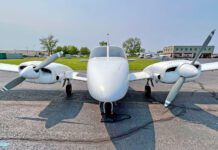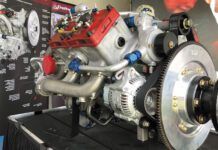PITOT-STATIC SYSTEMS
There’s a lot of good information in your DIY pitot-static system troubleshooting article in the October 2022 Aviation Consumer. I’ve done leak tests myself and the setup can be very simple.
Most folks can easily draw the required vacuum with their own lungs. My setup consists of a length of “firm” polyurethane tubing (1/8” inside diameter) with a one-way valve at the end. Near that end is a tee with a needle valve connected. The open end of the tubing is sealed to the static source opening with vacuum bagging tape, and the tubing is long enough that I can sit in the cockpit with the one-way valve to my lips as I watch the altimeter. I draw to slightly above— and start timing—as it passes 1000 feet on the way down. I use the needle valve to release the vacuum gradually, so as to not risk damage to the instruments.
As you mention, if you have a second static source it needs to be plugged. Note that sealing the system off with blue painter’s tape is porous and is not suitable for the job.
Scott Hunziker – via email
Thank you for the DIY pitot-static testing article. I don’t fly my older Cherokee IFR, but it prompted me to drag the airplane over to my shop for the test, which hasn’t been accomplished in at least 10 years, although I do keep up with transponder inspections per the regulations.
The long story short is that the static system in this old bird was a total mess. The tech found that the lines behind the panel were cracked, brittle and two of them were broken. He also found that the airspeed indicator had case leakage and had at least a 10-knot discrepancy. Two days of shop labor and $1700 later I’m back in business, but I wish that I kept up with the testing on a regular basis. I’m planning on doing a Garmin GI 275 upgrade and my understanding is that these instruments still require pitot-static input. Is this correct?
Vince Manniello – via email
Your story isn’t uncommon, especially with aging aircraft with static systems that have been neglected. The good news is that the system is now worthy for plumbing into the new digital instruments that, yes, still require an uncompromised pitot-static source input.
CESSNA 195
That was a good report on the classic Cessna 195 in the October 2022 issue of Aviation Consumer. I was determined to buy one of these airplanes, but all of the scary stories about insurance coverage for older pilots (I’m 72) has me thinking twice.
I currently fly a Cessna 182 with two other partners and my insurance broker told me there’s no guarantee I could get coverage for the 195. The back story is that I used to own a Cessna 180 and it got lost in a hurricane a number of years back, but before that I logged nearly 1500 hours of accident-free flight time in the airplane. That doesn’t seem to matter, unfortunately.
Chip Coates – via email
That all sounds about right for the current insurance market. Keep flying your 182—as much as you can.
In that Cessna 195 used report we incorrectly said that Heritage Aero at www.heritageaero.com has many spare parts for these airplanes. This links back to an FBO in Illinois that doesn’t specialize in 195s. Unfortunately, the Heritage Aero in Chino, California, that does have those spares does not have a webpage.
The Heritage Aero in Chino is run by longtime 195 guru Jeff Pearson, who can be reached at [email protected].
If there’s anyone who knows more about 195s than Pearson, we don’t know who it is. In addition, he knew Duane Wallace (longtime Cessna president) and had the opportunity to talk 190s and 195s with Wallace. Wallace was heavily involved in the design and owned a Cessna 195 for decades.





